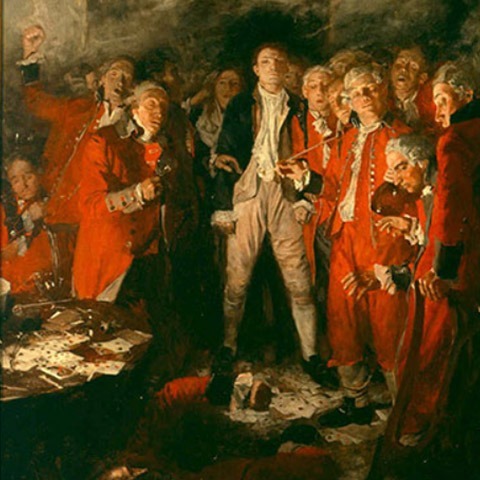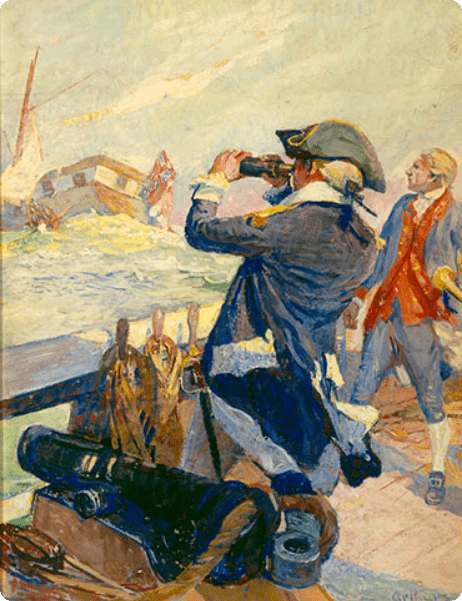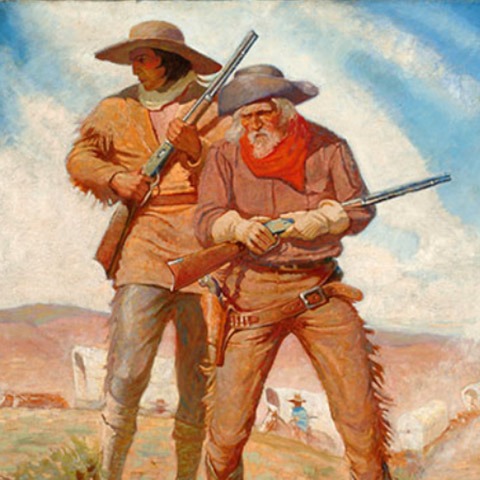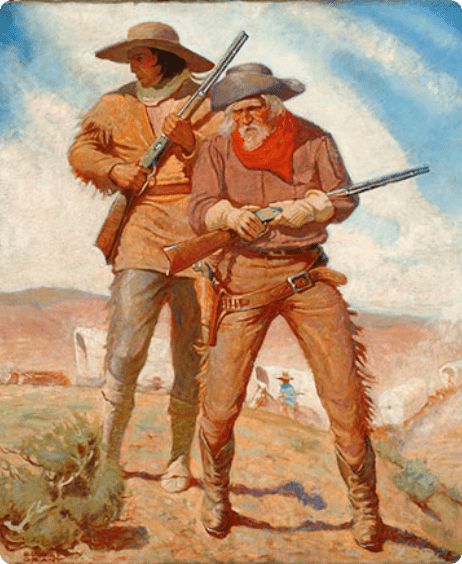Period of American Illustration
Before publishers could reproduce photographs in books and magazines, artists painted the pictures that accompanied literary text. Publishers recreated the paintings as prints—usually engravings or lithographs—and reproduced them within popular stories. In this time before television and radio, published illustrations were extremely influential and popular in America, and illustrators were highly regarded within this lucrative section of the publishing industry. In the last decades of the 1800s, many American art schools developed specialized programs to train graphic artists and illustrators. Howard Pyle (1853–1911), often called the father of American illustration, opened the Howard Pyle School of Illustration Art in his hometown of Wilmington, Delaware, in 1900, where he and the faculty trained many noted illustrators of the first three decades of the twentieth century, including N. C. Wyeth (1882–1945), Frank Schoonover (1877–1972), and Violet Oakley (1874–1961). Pyle’s influence on American art, named the Brandywine school, fostered a lasting regional tradition in American realism.

















